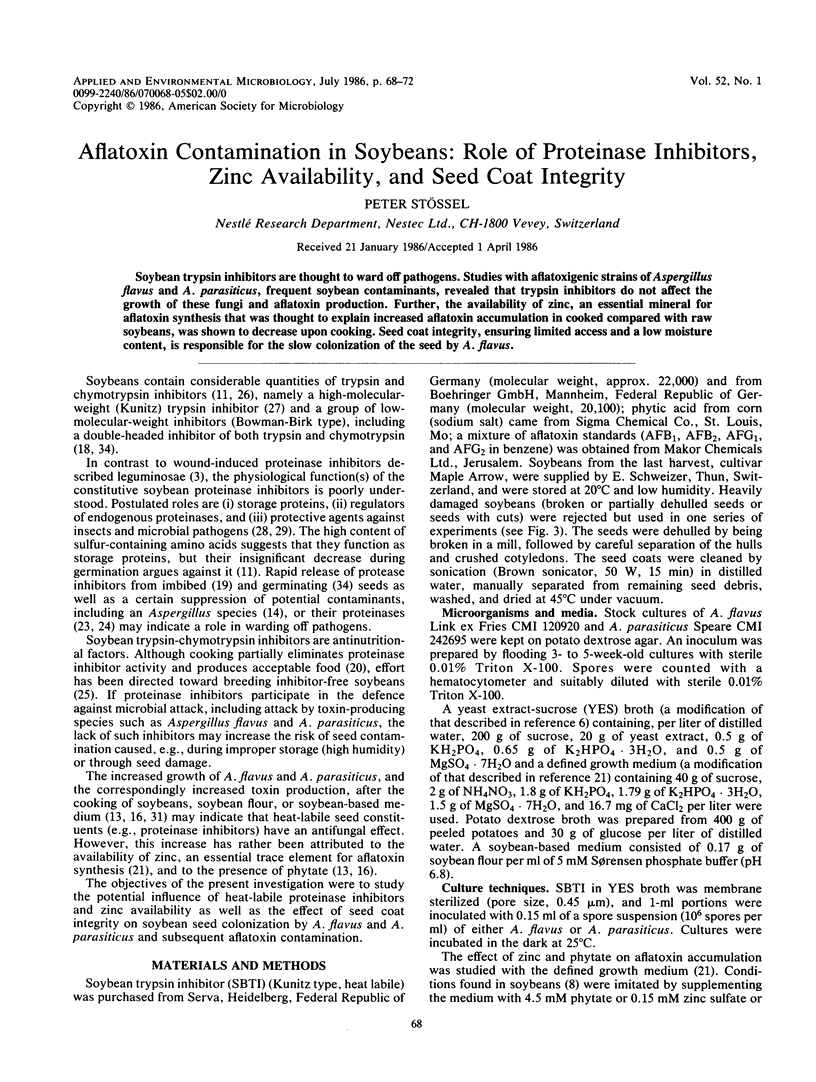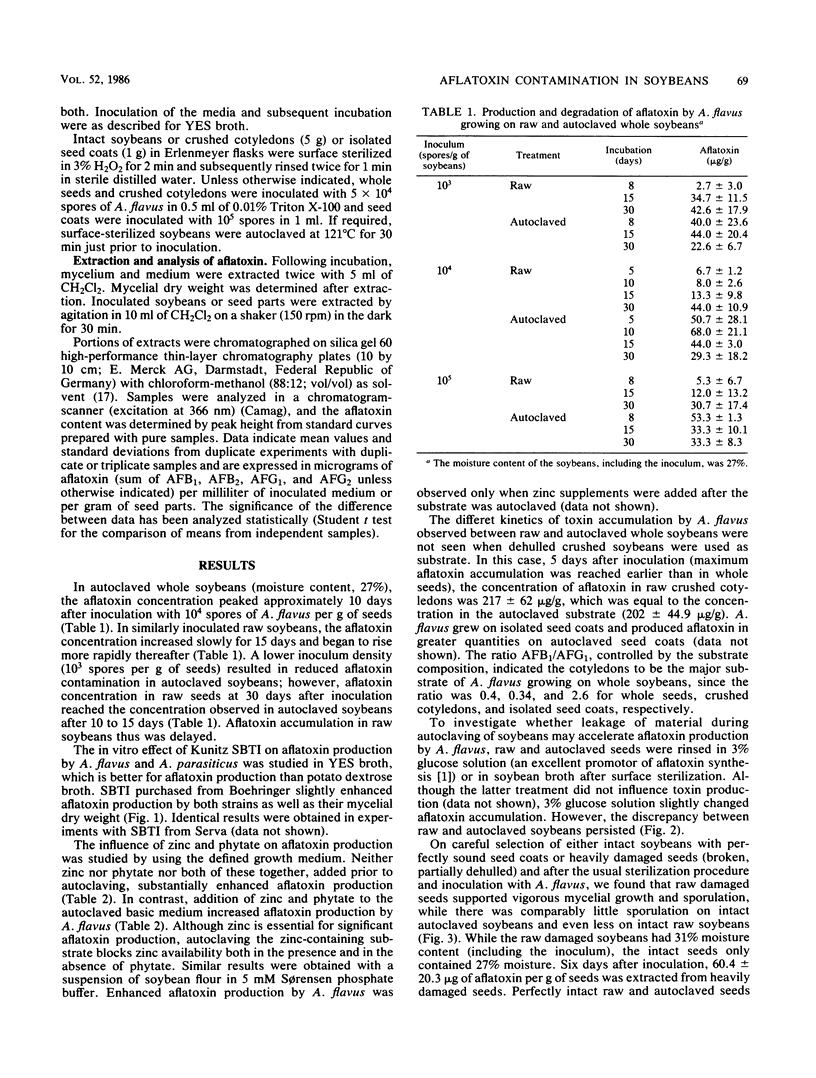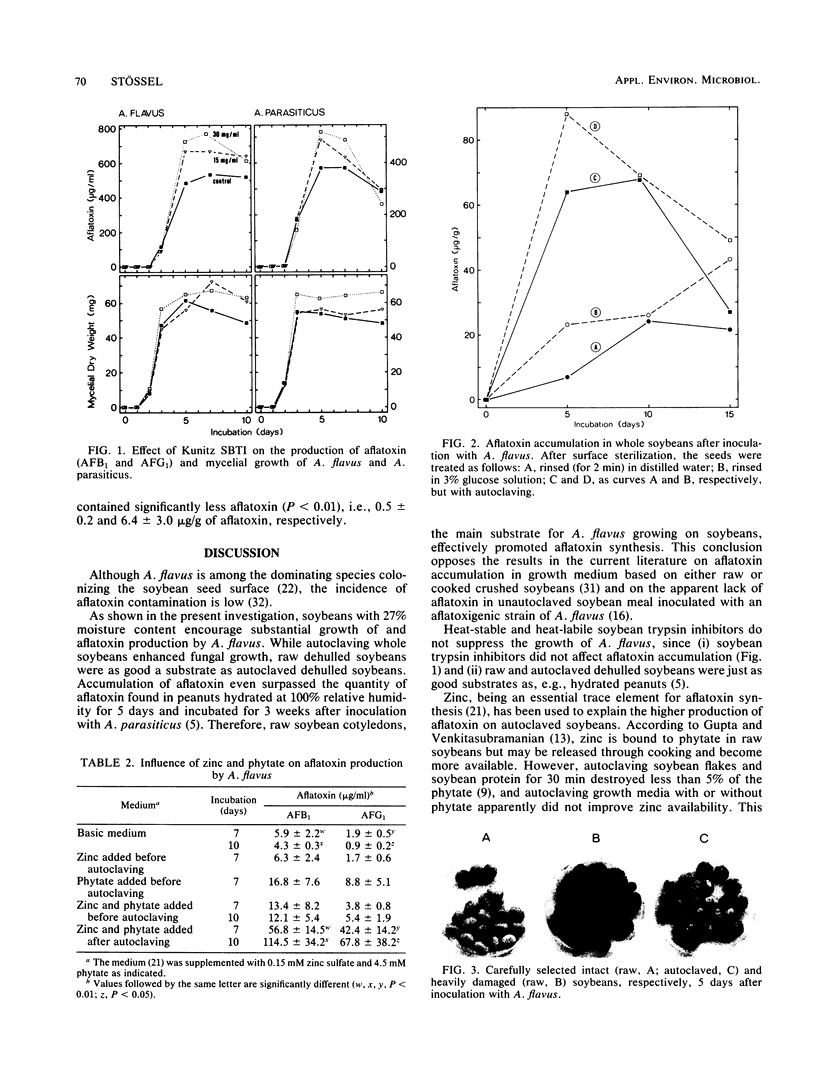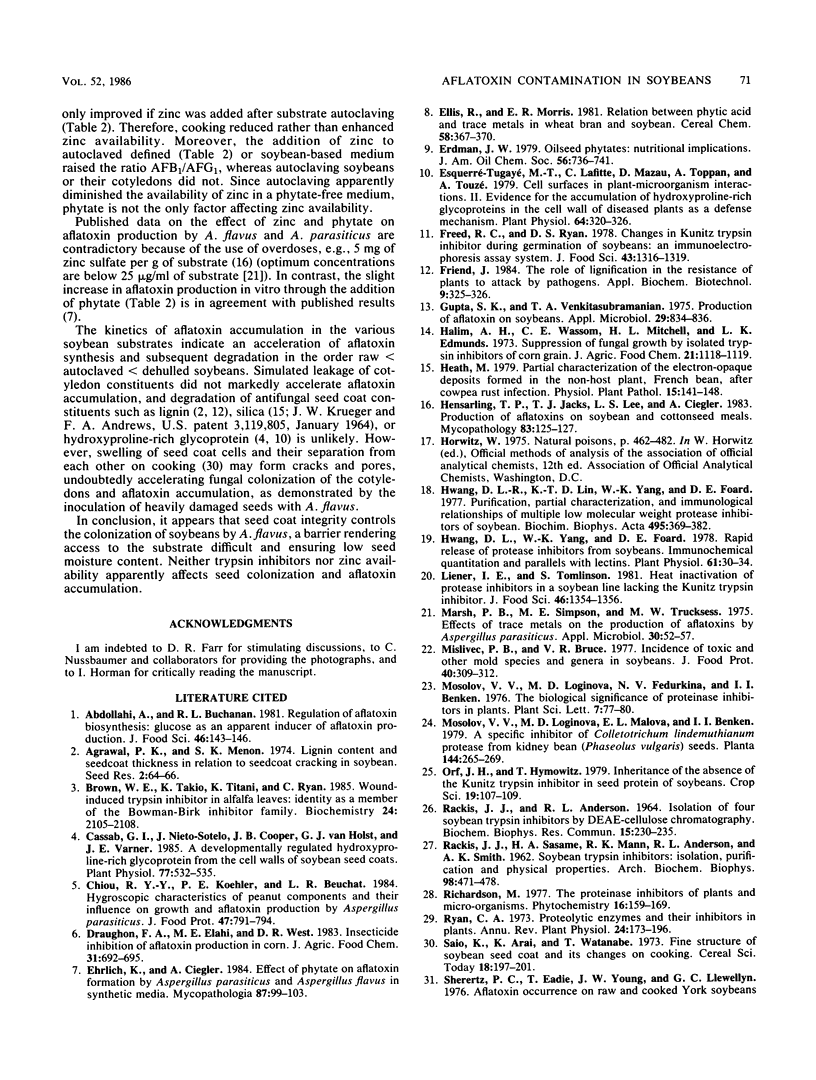Abstract
Soybean trypsin inhibitors are thought to ward off pathogens. Studies with aflatoxigenic strains of Aspergillus flavus and A. parasiticus, frequent soybean contaminants, revealed that trypsin inhibitors do not affect the growth of these fungi and aflatoxin production. Further, the availability of zinc, an essential mineral for aflatoxin synthesis that was thought to explain increased aflatoxin accumulation in cooked compared with raw soybeans, was shown to decrease upon cooking. Seed coat integrity, ensuring limited access and a low moisture content, is responsible for the slow colonization of the seed by A. flavus.
Full text
PDF




Images in this article
Selected References
These references are in PubMed. This may not be the complete list of references from this article.
- Brown W. E., Takio K., Titani K., Ryan C. A. Wound-induced trypsin inhibitor in alfalfa leaves: identity as a member of the Bowman-Birk inhibitor family. Biochemistry. 1985 Apr 23;24(9):2105–2108. doi: 10.1021/bi00330a002. [DOI] [PubMed] [Google Scholar]
- Cassab G. I., Nieto-Sotelo J., Cooper J. B., van Holst G. J., Varner J. E. A developmentally regulated hydroxyproline-rich glycoprotein from the cell walls of soybean seed coats. Plant Physiol. 1985 Mar;77(3):532–535. doi: 10.1104/pp.77.3.532. [DOI] [PMC free article] [PubMed] [Google Scholar]
- Ehrlich K., Ciegler A. Effect of phytate on aflatoxin formation by Aspergillus parasiticus and Aspergillus flavus in synthetic media. Mycopathologia. 1984 Aug 30;87(1-2):99–103. doi: 10.1007/BF00436636. [DOI] [PubMed] [Google Scholar]
- Esquerré-Tugayé M. T., Lafitte C., Mazau D., Toppan A., Touzé A. Cell Surfaces in Plant-Microorganism Interactions: II. Evidence for the Accumulation of Hydroxyproline-rich Glycoproteins in the Cell Wall of Diseased Plants as a Defense Mechanism. Plant Physiol. 1979 Aug;64(2):320–326. doi: 10.1104/pp.64.2.320. [DOI] [PMC free article] [PubMed] [Google Scholar]
- Gupta S. K., Venkitasubramanian T. A. Production of aflatoxin on soybeans. Appl Microbiol. 1975 Jun;29(6):834–836. doi: 10.1128/am.29.6.834-836.1975. [DOI] [PMC free article] [PubMed] [Google Scholar]
- Halim A. H., Wassom C. E., Mitchell H. L., Edmunds L. K. Suppression of fungal growth by isolated trypsin inhibitors of corn grain. J Agric Food Chem. 1973 Nov-Dec;21(6):1118–1119. doi: 10.1021/jf60190a016. [DOI] [PubMed] [Google Scholar]
- Hensarling T. P., Jacks T. J., Lee L. S., Ciegler A. Production of aflatoxins on soybean and cottonseed meals. Mycopathologia. 1983 Nov 21;83(2):125–127. doi: 10.1007/BF00436896. [DOI] [PubMed] [Google Scholar]
- Hwang D. L., Lin K. T., Yang W. K., Foard D. E. Purification, partial characterization, and immunological relationships of multiple low molecular weight protease inhibitors of soybean. Biochim Biophys Acta. 1977 Dec 20;495(2):369–382. doi: 10.1016/0005-2795(77)90392-0. [DOI] [PubMed] [Google Scholar]
- Hwang D. L., Yang W. K., Foard D. E. Rapid release of protease inhibitors from soybeans: immunochemical quantitation and parallels with lectins. Plant Physiol. 1978 Jan;61(1):30–34. doi: 10.1104/pp.61.1.30. [DOI] [PMC free article] [PubMed] [Google Scholar]
- Marsh P. B., Simpson M. E., Trucksess M. W. Effects of trace metals on the production of aflatoxins by Aspergillus parasiticus. Appl Microbiol. 1975 Jul;30(1):52–57. doi: 10.1128/am.30.1.52-57.1975. [DOI] [PMC free article] [PubMed] [Google Scholar]
- RACKIS J. J., SASAME H. A., MANN R. K., ANDERSON R. L., SMITH A. K. Soybean trypsin inhibitors: isolation, purification and physical properties. Arch Biochem Biophys. 1962 Sep;98:471–478. doi: 10.1016/0003-9861(62)90213-8. [DOI] [PubMed] [Google Scholar]
- Rackis J. J., Anderson R. L. Isolation of four soybean trypsin inhibitors by DEAE-cellulose chromatography. Biochem Biophys Res Commun. 1964 Mar 26;15(3):230–235. doi: 10.1016/0006-291x(64)90151-2. [DOI] [PubMed] [Google Scholar]



